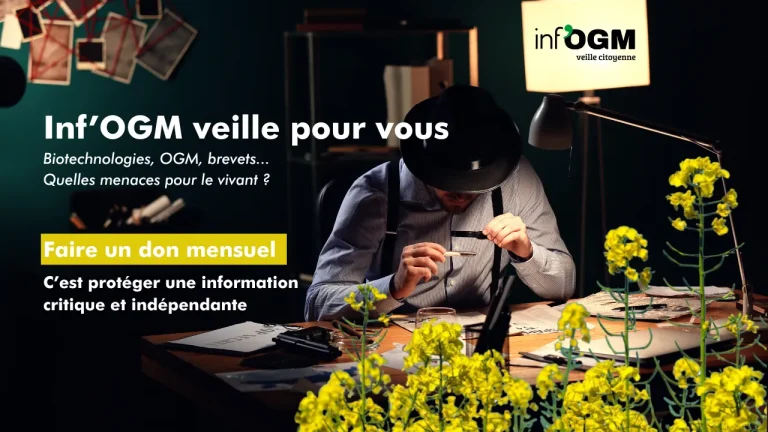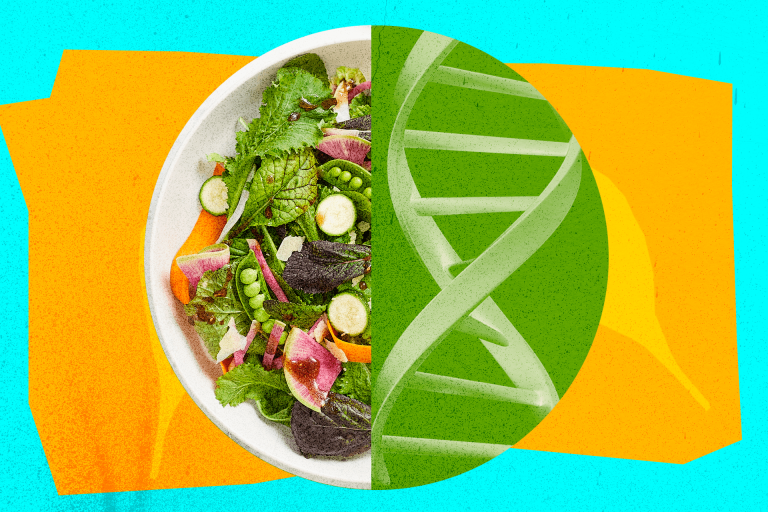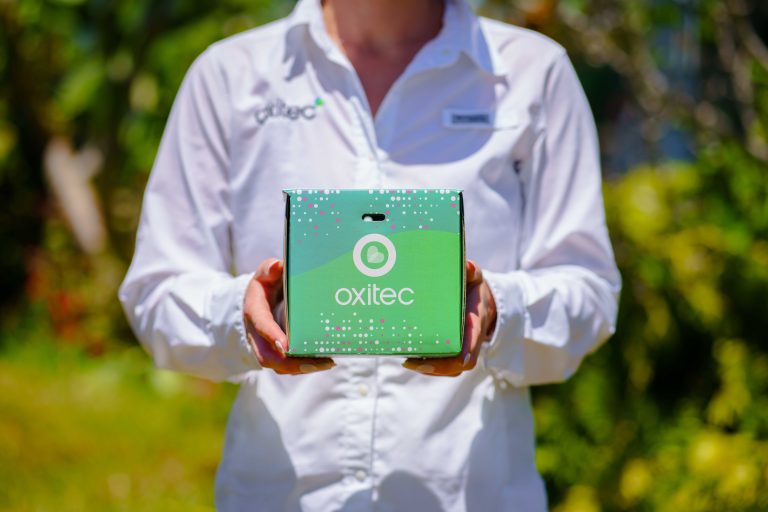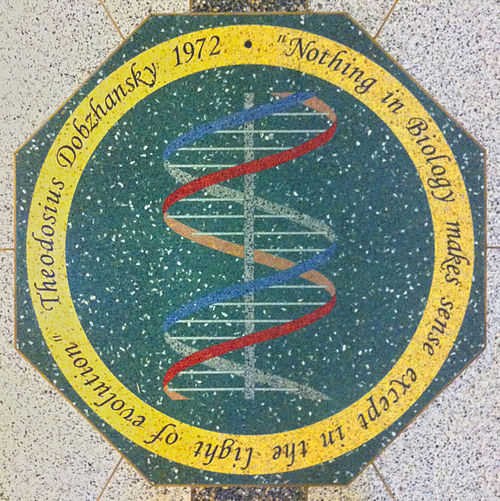Actualités
USA – For new GMOs, a new definition
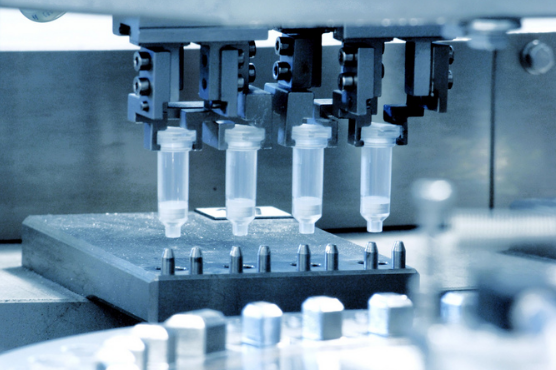
For the first time since 1986, the USA are debating a possible change of the definition of a GMO. Echoing the debate currently going on in the European Union, three Agencies are working on a « modernisation » of the legal framework due to the arrival of new techniques of genetic modification. An opportunity for the Department of agriculture to propose a new definition of a GMO, more restrictive than the existing one.
In 2015, the US administration launched an update of its legal framework concerning “biotechnology products” [1]. The Agencies of Agriculture (USDA), Environment (EPA) and Food and Drug (FDA) were to clarify their respective role and responsibilities and to propose a long-term strategy of risk assessment of the future products of biotechnology. At the beginning of 2017, two of the three Agencies, Agriculture et Environment, have submitted their proposals for public consultation. The Department of Agriculture wants to know the public’s opinion on a change of the GMO definition itself (the consultation will end on june the 19th [2]). A proposal which Inf’OGM details in this paper as it is the cornerstone of the entire system that might be implemented tomorrow in this country.
GMO : three Agencies are involved
In the USA, there is no federal law that is specific to GMOs. There is only a coordinated framework (see below). GMOs, just like non-GMO products, are regulated under the ordinary legislation dealing with health, security or environment [3]. The absence of law specific to GMOs is the reason why three federal Agencies are involved, each within its jurisdiction.
Since 1986, products obtained through biotechnologies are managed through the Coordinated Federal Framework for Regulation of Biotechnology. Under this framework three Agencies are involved in the GMO case : the Department of agriculture for genetically modified plant cultivation (for surfaces over 10 acres) except for plants with plant Incorporated Protectants (PIP), the Environmental Protection Agency for PIP cultivation and GM animals and microorganisms, and finally the Food and Drug Agency for GMOs for food and feed.
In order to correctly understand the USDA’s proposal, let’s go back to the current definition. According to the USDA, GMOs are organisms obtained through genetic engineering, defined as “The genetic modification of organisms by recombinant DNA techniques” [4]. On the basis of this definition, the USDA considers for example that a GMO must be regulated in the cases where “the donor organism, recipient organism, or vector or vector agent belongs to any genera or taxa [… that] meets the definition of plant pest, or is an unclassified organism…” [5]. Depending on each case, USDA will require to regulate or deregulate the GMO.
New techniques, new definition and new exclusions
In January 2017, the USDA submitted for public consultation a proposal to change the rules regarding GMO management [6] among which lies the cornerstone of the entire system : the change of the GMO definition and of techniques giving rise to GMOs (grouped under the name of genetic engineering). According to the new definition proposed by USDA, genetic engineering would be a family of “techniques that use recombinant or synthetic nucleic acids with the intent to create or alter a genome”.
First of all, this definition introduces the criteria of intention which is absent from the current definition. Secondly, this definition is more restrictive as it replaces the reference to “recombinant DNA techniques” by “recombinant or synthetic nucleic acids” (see box below).
And the remaining proposals hardly hide the USDA’s will to regulate less products obtained through biotechnology. Its approach aims at enlarging the list of exclusions.
Thus, would therefore be excluded from the proposed definition the “traditional breeding techniques (including, but not limited to, marker- assisted breeding and chemical or radiation-based mutagenesis, as well as tissue culture and protoplast, cell, or embryo fusion)” [7]. Would also be excluded from the definition of GE organisms the organisms “that could have been produced via traditional breeding”. USDA further explains that the organisms whose genetic modification is “solely a deletion of any size or a single base pair substitution which could otherwise be obtained through the use of chemical- or radiation-based mutagenesis [… the introduction of] only naturally occurring nucleic acid sequences from a sexually compatible relative that could otherwise cross with the recipient organism and produce viable progeny through traditional breeding (including, but not limited to, marker-assisted breeding, as well as tissue culture and protoplast, cell, or embryo fusion)” wouldn’t be considered as GMOs .
UDSA is supposing that organisms obtained through genetic engineering and those obtained through traditional breeding techniques or chemical- or radiation-based mutagenesis can have “small genetic differences [but] those differences are not phenotypically observable and these types of changes occur naturally in all organisms” (Inf’OGM recalls that the effects can also be epigenetic and not only genetic and that the chronic toxicity of an ingredient for example is not, most of the time, “phenotypically observable”. Lastly, the third exclusion : the progeny of GMOs that no longer contain inserted DNA would also be excluded from the new definition of products obtained through genetic engineering and therefore, would not fall under the scope of the proposed regulations.
It must be noted that between 2016 and 2017, the USDA changed its proposal of modification of the definition. As it is recalled in its public document published in January 2017 [8], the Department suggested last year that regulated products would be defined as an “organism developed using biotechnology that poses plant pest or noxious weed risks”. The USDA adds that the term biotechnology was defined as “Laboratory-based techniques to create or modify a genome that result in a viable organism with intended altered phenotypes. Such techniques include, but are not limited to, deleting specific segments of the genome, adding segments to the genome, directed altering of the genome, creating additional genomes, or direct injection and cell fusion beyond the taxonomic family that overcomes natural physiological reproductive or recombination barriers. […] this definition does not include traditional breeding, marker-assisted breeding, or chemical or radiation-based mutagenesis”.
But this 2016 definition proposal did not receive positive comments. As the USDA explains, some stakeholders “expressed concern regarding the proposed definition of biotechnology. They pointed out to APHIS that traditional breeding often uses laboratory-based techniques, such as tissue culture and embryo rescue, to create or modify a genome, and radiation-based mutagenesis, which modifies genomes, is often conducted in a laboratory. The stakeholders expressed concern that the definition could result in widespread confusion regarding which laboratory-based techniques to alter a genome are considered biotechnology, and which are not”. With reason…
A new… illegal definition ?
The confusion that worries some stakeholders in the USA does not exist at the international or european level. The Cartagena Protocol states that living modified organisms (LMOs) are obtained through “the application of in vitro nucleic acid techniques” [9]. The Codex Alimentarius, a key United Nations commission in dispute settlements under the WTO, has two main texts dealing with “Foods Derived from Modern Biotechnology” [10] and “Foods Derived from Recombinant-DNA” [11]. Those two texts use the Cartagena Protocol definition as in both cases, the genetic material has been modified “by the application of in vitro nucleic acid techniques, including recombinant deoxyribonucleic acid (DNA) and direct injection of nucleic acid into cells or organelles”. The OECD simply states, in a 1997 definition, that a GMO is “a plant or animal, micro-organism or virus which has been genetically engineered or modified”, detailing that genetic engineering is a “process of inserting new genetic information into existing cells for the purpose of modifying one of the characteristics of an organism” [12].
When the international legal framework defines GMOs as organisms obtained through techniques of genetic modification implemented in vitro, without restricting them to the insertion of genetic material, how should we understand the USDA’s proposed regulations? This definition de facto restricts the list of organisms considered as GMOs and would be at odds with the international legislation. Inf’OGM records here that if the USA are not a Party to the Cartagena Protocol and are therefore not legally binded to it, the GMO definition of this Protocol is used by several not legally binding international tools (OECD guidelines and Codex Alimentarius) which serve as a reference under the WTO [13].
If the proposed rules were to be adopted, the restrictive definition of a GMO would put the USA at odds with the legislation of one of its main trade partner : the European Union. A situation quite problematic with the transatlantic trade and investment partnership negotiations going on. The proposed rules are to be seen as a first national step that explains the ongoing USA’s lobbing efforts directed at the EU [14].
Which definition of recombinant DNA ?
It might not look like it but this is fundamental. The ongoing debate on new techniques brings out a restrictive interpretation of the GMO legislations, in particular European, promoted by industry : according to industry, DNA-recombinant techniques would consist in the insertion of nucleic acid in the cell so this nucleic acid recombines with the genome in order to remain stable in it. An interpretation that does not fit with the definition provided by Codex Alimentarius on the one hand nor with the USDA’s interpretation of the current regulations on the other .
As explained above, according to Codex, a plant modified by a recombinant DNA is a “plant in which the genetic material has been changed through in vitro nucleic acid techniques, including recombinant deoxyribonucleic acid (DNA) and direct injection of nucleic acid into cells or organelles”. The wording “including” clearly indicates that the recombination of a DNA (stable insertion) is not the only specific case of recombinant DNA techniques. Thus the overall framework is the one of modifications of the genome caused by the application of “in vitro nucleic acid techniques”. Considering the similarity of the two definitions used by Codex concerning modern biotechnology on one hand and recombinant-DNA plant on the other hand (see “A new… illegal definition?”), we notice that Codex considers recombinant-DNA plant as being the plants obtained through modern biotechnology, and vice versa.
As for the USDA, the definition must be read between the lines. USDA proposes to change the current legislation of genetic engineering defined as “the genetic modification of organisms by recombinant DNA techniques”. Instead, genetic engineering would be defined as “techniques that use recombinant or synthetic nucleic acids with the intent to create or alter a genome”. Talking about “recombinant nucleic acids” is not the same as talking about “recombinant DNA techniques”. And if the Department believes necessary to clarify this, it implies that it does not agree with the current definition, probably considered too broad as it covers all techniques implemented in vitro, as envisioned by the Codex.
[1] https://obamawhitehouse.archives.gov/blog/2017/01/04/increasing-transparency-coordination-and-predictability-biotechnology-regulatory
[2] Federal Register/Vol. 82, No. 12, Thursday, January 19, 2017, Proposed Rules, Department of agriculture, Animal and Plant Health Inspection Service, 7 CFR Part 340 [Docket No. APHIS–2015–0057] RIN 0579–AE1
[3] A number of factors determine which law applies to a GMO or its product : the type of organism – plant, animal or micro-organism- , the intended uses, the type of possible hazards, the stage of development – laboratory setting, field testing, ready for commercial use.
[4] USDA, Code of Federal Regulations « 7 CFR Part340 », Part 1 Definitions
[5] According to the current definition, a plant pest is « Any living stage (including active and dormant forms) of insects, mites, nematodes, slugs, snails, protozoa, or other invertebrate animals, bacteria, fungi, other parasitic plants or reproductive parts thereof; viruses; or any organisms similar to or allied with any of the foregoing; or any infectious agents or substances, which can directly or indirectly injure or cause disease or damage in or to any plants or parts thereof, or any processed, manufactured, or other products of plants. »
[6] Federal Register/Vol. 82, No.12
[7] if USDA finally proposes this definition, we can notice that in its document, it keeps on swinging between two syntaxes, the one leading to differentiate between chemical or radiation-based mutagenesis and traditional breeding techniques ; and the one leading to consider chemical or radiation-based mutagenesis as a traditional breeding technique.
[8] USDA, Code of Federal Regulations, page 7029
[9] Cartagena Protocol, article 3 point g) et i)
[10] CAC/GL 44-2003, modified in 2011
[11] CAC/GL 45-2003, modified in 2008
[12] Agricultural Policies in OECD Countries : Monitoring and Evaluation 2000 : Glossary of Agricultural Policy Terms, OECD et Glossary of Environment Statistics, Studies in Methods, Series F, No. 67, United Nations, New York, 1997
[13] More precisely, the Agreement on Sanitary and phytosanitary measures states that Members should base their sanitary and phytosanitary norms on international standards and guidelines, developed by relevant international organisations, including the Codex Alimentarius Commission.





